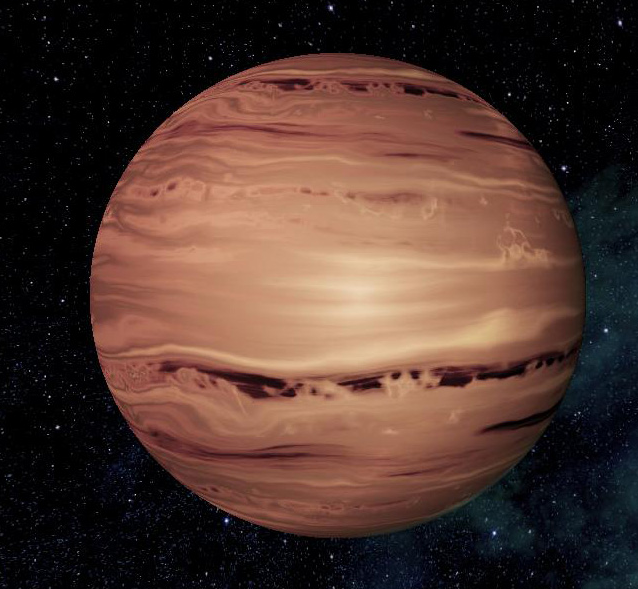PLANET SURVEY: October-1a 1
Class T, Gas Giant "Hot Jupiter"
Class T, Gas Giant "Hot Jupiter"

Mass of the planet: 1.42 X 10^27
Distance from the sun: 657,000 kilometers
Inclination: 1.0034 degrees
Density: 1.42 g/cm3
Time of revolution (how long is a year): 105 standard Sol days.
Time of rotation (how long is a day): 2days 9hours 17minutes 32 seconds
Atmosphere Chemical Composition: 91% Hydrogen, 6% Helium, 2% Methane 1% other
Moons or Rings: No discernible rings are present nor moons with enough mass to warrant including in this report.
A moderate magnetosphere is present.
The T-class gas giant October-1a 1 is a typical hot-Jupiter planet. Its close proximity to its parent star has bathed the gas giant in radiation since its formation. Its temperature gradients are extreme between its sun facing and shadowed side. This is likely due to its unusually slow rotational period of over two days, atypical for a planet so close to its star. This long duration of one side facing its star heats its gas atmosphere up significantly, creating an expansion of its upper layers, and a tidal bulge on the sunward side. A year on this planet would last a little over 105 Terran days, but it only rotates 43 times during its calendar year. The gravitational tug from the star has robbed the planet of any significant moons if it ever had any, and has kept it locked into a very small inclination, common for planets in such proximity. For the same reason, it has almost no tilt of its axis. The planet does have a moderate magnetosphere, indicating the presence of at least some heavy metals at its core.
Three satellites were left in orbit to survey the planet through the course of its travels around the star, but it's unlikely anything of significance will be discovered.